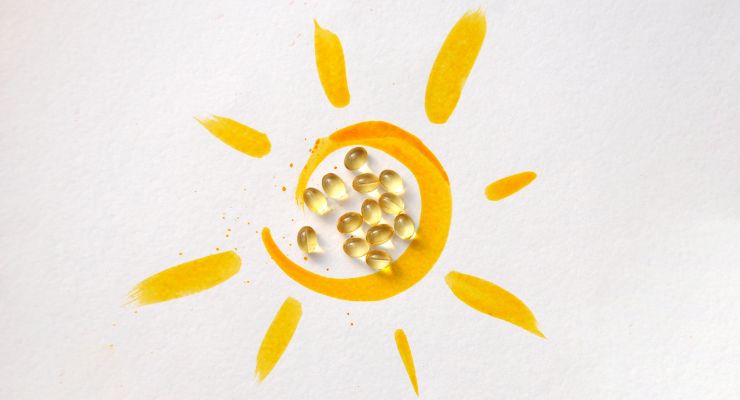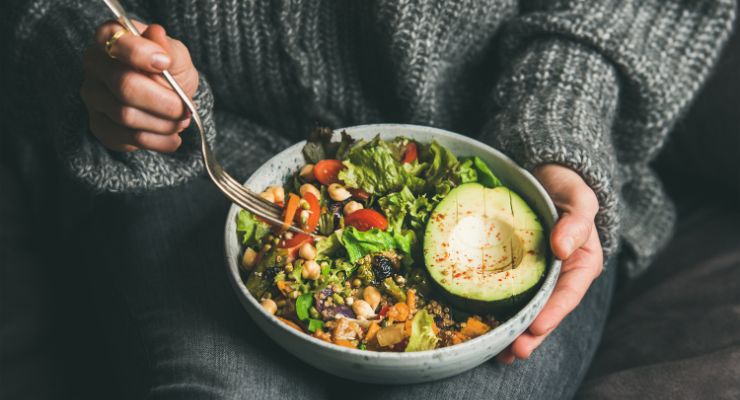Columns
Why Aren’t Dietary Supplements Included in the Supplemental Nutrition Assistance Program (SNAP)
Advocates argue that making supplements more affordable for those most in need can help address a range of health challenges.

By: Erik Goldman

A coalition of nutrition advocacy groups spearheaded by the Organic & Natural Health Association (ONHA) is calling on Congress to amend the Farm Bill so it will include vitamin D as an eligible expense under the federal Supplemental Nutrition Assistance Program (SNAP).
The All for Vitamin D: Building Stronger Families in a SNAP campaign is a joint effort between ONHA, the Council of Holistic Health Educators, the Independent Natural Foods Retailers Association (IFRA), the Natural Grocers, and the SENPA Natural Industry Alliance to strengthen the positive health impact of the SNAP program.
Like all supplements, vitamin D is currently excluded from SNAP, the federal food assistance voucher program formerly known as “Food Stamps.” ONHA and its allies are hoping to change that by rallying health-conscious citizens, nutrition industry representatives, and medical professionals to urge their elected officials to amend the Farm Bill, which governs SNAP.
An Affordable Solution
“Vitamin D3 supplements offer an affordable solution to address a range of health challenges faced by families, including preterm births, depression, respiratory infections, asthma, cancer, and chronic diseases like cardiovascular issues, high blood pressure, and Type 2 diabetes,” said Karen Howard, ONHA’s CEO, in an announcement about the new initiative.Howard contends that enabling more low-income citizens to buy vitamin D with their SNAP accounts will ultimately reduce the burden of chronic disease and save taxpayer healthcare dollars.
Over 41.2 million Americans—roughly 12% of the total population—are enrolled in SNAP, which has its roots in federal food assistance programs established during the Great Depression in the 1930s. The modern SNAP program’s stated intention is to provide “food benefits to low-income families to supplement their grocery budget so they can afford the nutritious food essential to health and well-being.”
All for Vitamin D’s leaders point out that, “While SNAP permits the purchase of a diverse range of foods, encompassing fruits, vegetables, grains, dairy, and proteins, it lacks explicit guidelines concerning the quality and nutritional value of these items. Particularly, when addressing the challenge of meeting therapeutic vitamin D levels (40-60 ng/ml), SNAP falls short in providing solutions, especially since these vitamin D levels cannot be achieved solely through food or sunlight exposure.
ONHA cites a number of studies showing that people who maintain their serum vitamin D levels above 40 ng/ml obtain myriad health benefits, including a 60% reduced risk of preterm birth, a 65% lower cancer risk, and decreased incidence, severity, and morbidity from COVID-19.
Dark-skinned people, who represent a disproportionate number of SNAP recipients, are at particular risk of vitamin D deficiency because the melanin in their skin absorbs UVB from sunlight, limiting the endogenous production of vitamin D.

An Ongoing Effort
The All for Vitamin D campaign is the latest salvo in a long and arduous effort to convince lawmakers to expand SNAP’s definition of “food” so it will incorporate vitamins and other nutraceuticals.In 2017, Representative Mike Rogers (R-AL) introduced a bill in the House called the SNAP Vitamin and Mineral Improvement Act that would modify the program to permit vitamins, minerals, and other supplements as an eligible expense.
Rogers’ bill had strong support from most nutrition industry trade groups, as well as some high-profile policymakers. It was included in the House version of the 2018 Farm Bill, but was killed off in the Senate, despite strong advocacy from longtime supplement advocate, Utah Senator Orrin Hatch.
Senate agriculture committee chairman Pat Roberts (R-KS) and ranking Democrat Debbie Stabenow (D-MI) opted to cut all Farm Bill amendments that could be perceived as partisan obstacles to smooth passage. The agriculture committee deemed Rogers’ vitamin inclusion provision as one of those potential obstacles, and nixed it from the final 2018 version of the bill.
SNAP rules consider vitamins and supplements to be “non-food” and therefore ineligible for purchase with SNAP dollars. Some public health experts justify the exclusion by arguing that permitting beneficiaries to use SNAP coupons for supplements would divert their limited funds away from “real” food.
That’s ironic given that soft drinks, cookies, cakes, and just about any junk food you can imagine are considered “eligible” under existing SNAP rules. According to a 2016 report by the U.S. Department of Agriculture, sodas are the top most-purchased commodity by SNAP beneficiaries. Talk about diverting money from real food!
The notion that everyone can and should be able to derive all important nutrients directly from food, and that supplements encourage people to skip “real” meals, ignores the fact that people relying on food assistance are often poorly nourished and frequently skipping meals because they don’t have enough to eat.
Keep in mind that the average benefit that SNAP participants receive equals around $4 daily per person, or approximately $1.40 per meal. That doesn’t go too far given today’s food prices—especially for healthy foods.
Vitamins, minerals, and other supplements are not the ultimate answer to poor nutrition among the nation’s poorest citizens. But they could be important tools in helping people move toward better overall health.
Food Insecurity on the Rise
Food insecurity is a massive multi-faceted problem. Tens of millions of Americans rely on SNAP, local food banks, and hunger relief agencies to keep themselves and their families fed.According to Feeding America, which supports a network of more than 200 food banks and 60,000 pantries, at least 60 million Americans visited large regional food banks, smaller local food pantries, or other food assistance programs in 2020. Food insecurity surged during the first year of Covid, and it has not let up since.
Three years on, 80% of food banks still report either an increase in or a steady demand for emergency food relief month-to-month, according to Feeding America. Nationwide, food banks and related programs now serve 55% more people than before Covid.
Soaring inflation and surging food prices exacerbate problems that predate the pandemic.
Like SNAP, nearly all of the nation’s food banks exclude dietary supplements, despite the obvious fact that people who rely on these emergency food programs are unlikely to get all the nutrients they need through diet alone.
In recent years, there have been some important initiatives to encourage better nutrition within food aid programs. But at best, they are ambivalent about supplements.
In 2019, a national program called Healthy Eating Research (HER) convened an expert panel “to improve the quality of foods in food banks and pantries in order to increase access to and promote healthier food choices.” The group issued a final report in March 2020 titled, “Healthy Eating Research Nutrition Guidelines for the Charitable Food System.”
The HER recommendations draw from various nutrition ranking systems created for use within nonprofit, government, and private sectors. They also incorporate federal guidance from the 2015-2020 Dietary Guidelines for Americans and the FDA’s food labeling rules and regulations.
The HER system is designed to help food banks—and the people who visit them—evaluate the nutritional quality of diverse food products. The authors acknowledge that: “Many items moving through the charitable food system are shelf-stable, highly processed foods that tend to be high in saturated fat, sodium, and added sugars.”
Based on their ingredients and the concentrations of fat, salt, and sugar, the HER schema categorizes products into one of three tiers: “Choose Often,” “Choose Sometimes,” or “Choose Rarely.”

‘Not Ranked’
The HER guidelines acknowledge the existence of dietary supplements, grouping them among protein powders, baby food, and other “miscellaneous items.” But they do not rank these products, stating that “they are considered necessary only for specific populations or when treating specific disease states.”The report goes on to say, “It is important to note that these miscellaneous products are by and large not appropriate for use by the general population. Rather, they should be reserved for clients with specific nutritional needs or conditions.”
Though HER does not categorically dismiss supplements, it definitely counsels against their wide use.
Administrators at food banks say they often receive donations of supplements and nutraceuticals from retailers, distributors, food drive collections, and manufacturer donations. But supplements create a real conundrum for food aid agencies. On one hand, administrators recognize their potential for helping people improve their nutritional status, while on the other they are aware of issues like purposeful or accidental adulteration and exaggerated product claims.
The question is further complicated by the fact that food banks often receive donations of products nearing their “best by” dates.
In the absence of established standards and guidelines for evaluating the safety and potential benefits of supplements, food bank staffers are left to their own judgment in deciding whether or not to put the donated products out on the shelves.
The harsh reality is that in the majority of cases, supplements donated to food banks will end up in a dumpster.
A Lost Opportunity
That’s a lost opportunity to help people who struggle to meet their nutritional needs, and who could potentially benefit from dietary supplements but usually cannot afford them.There’s no question that food insecurity correlates strongly with disease risk and increased medical spending.
According to a recent study by Deepak Palakshappa, MD, an internist at Wake Forest University, families that were food-insecure in 2016 had 20% higher medical expenditures in 2017 than did those families who had secure and consistent access to nutritious food. On average, the food-insecure families spent $2,465 more in annual medical expenses than the food-secure families (Palakshappa D, et al. Health Affairs. 2023).
Palakshappa and his team based that finding on analysis of data from 14,666 individuals representing 6,621 families across the U.S. The goal was to determine how food insecurity—defined as lack of consistent access to nutritious food—during the calendar year 2016 impacted family medical expenditures in 2017.
On the individual level, food-insecure people had an average of $1,307 in additional medical expenses, compared to those whose families consistently had enough to eat. The additional expenses included higher spending for emergency department visits, inpatient visits, outpatient visits, and prescription drugs.
In September 2022, the Biden administration hosted the White House Conference on Hunger, Nutrition, and Health. It was the first such conference in over half a century.
The initiative’s stated goal is to: “End hunger and increase healthy eating and physical activity by 2030, so that fewer Americans experience diet-related diseases like diabetes, obesity, and hypertension.”
The conference included discussion of food insecurity and its rising prevalence. Action steps that emerged include plans to expand “incentives for fruits and vegetables in SNAP; facilitating sodium reduction in the food supply by issuing longer-term, voluntary sodium targets for industry; and assessing additional steps to reduce added sugar consumption.”
But in keeping with the longstanding federal policy of excluding supplements from public programs, the new initiative makes no mention of them other than to state that, “FTC (Federal Trade Commission) has indicated that it will pursue targeted law enforcement actions to prevent the deceptive advertising of foods and dietary supplements … that might be targeted to youth.”
The All for Vitamin D campaign is aimed at creating a chink in the federal government’s seemingly ironclad policy of excluding supplements. By playing to the strong science supporting vitamin D, the widespread prevalence of deficiency, and the staggering scope of food insecurity and poor nutrition, ONHA and its partner organizations have a fighting chance to win the minds and hearts of some lawmakers.
About the Author: Erik Goldman is co-founder and editor of Holistic Primary Care: News for Health & Healing, a quarterly medical publication reaching about 60,000 physicians and other healthcare professionals nationwide.


